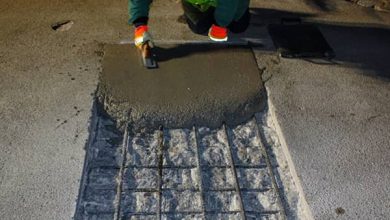
Cling wrap, vacuum packaging, and shrink wrap are often confused for one another despite being very different. Cling wrap is used to wrap food products by pulling them around the products and adhering the film to itself. While it can create a tight seal, it’s not actually shrink wrap packaging. In vacuum packaging, the air is completely removed from the packet shrinking its total size, but still not shrink wrap packaging.
Here in this guide, we’ll learn what is shrink wrap packaging and how does it differ from other forms of plastic packaging.
What is Shrink Wrap Packaging
Shrink wrap packaging is a see-through flexible polymer material that can be used to pack or cover finished goods. When heat is applied to the shrink film, through a heat gun or electric gun or a conveyor heat tunnel, it reforms itself into the shape of the good it is covering. This makes for a tight seal that not only protects the product from outside harm like dirt, water, or dust but keeps the product visible for the users as well.
This phenomenon happens due to the restructuring of the molecules inside the shrink wrap. These molecules are randomly intertwined, without any particular alignment. When heat is applied to the plastic surface, the molecules reorient from their original pattern and align with the direction of the orientation. It sets after it cools down and takes over the new shape easily.
Different Types of Shrink Film and Their Uses
There are three different kinds of shrink films that are used globally based on their properties and their uses. They are polyvinyl chloride, polyolefin, and polyethylene. Each film has its own characteristics and is hence used for specific applications. They can even be mixed and used with different additives for increasing durability or enhancing the appearance of the product.
Here is a detailed look into the three kinds of shrink film and their uses.
Polyvinyl Chloride
Also known as PVC, Polyvinyl Chloride was the most commonly used kind of shrink packaging once but due to the health dangers and lack of sustainable qualities, it made way for newer shrink films. PVC is an inexpensive, lightweight, and multi-purpose material that can be used for flexible as well as rigid constructs.
PVC is mostly used in packaging projects in several different industries. It is used for cable insulation, blood bags, blister packs, clamshells, packaging of non-edible items, CDs, DVDs, and more. It has got some issues, however.
Polyolefin
Polyolefin is an FDA-approved shrink wrap material suitable for packaging food products. It is extremely durable and versatile and has taken the place of PVC. It has excellent seal strength and puncture resistance making it suitable for protecting irregular shaped products.
POF is great for presentation as well due to its glossy shelf appearance and superb clarity. It is made from completely recyclable materials and can bind multiple products together as well. Common items like games, books, toys, candies, retail items, and other consumer products use POF for packaging as well as appearance purposes.
Polyethylene (PE)
When ethylene is added during polymerization, a single monomer film is formed known as Polyethylene. It is a type of polyolefin and can be used for flexible protective packaging for several products. Polyethylene or PE is of three forms: High-Density Polyethylene (HDPE), Low-Density Polyehtylene (LDPE), and Linear Low-Density Polyethylene (LLDPE).
LLDPE or Linear Low-Density Polyethylene is the most flexible among the three and is used commonly in the packaging industry. It is perfect for stretching and protecting heavy items during transport. While it is often confused for shrink films, it performs very differently.
Benefits of Shrink Wrap
Protection
Shrink wrap packaging is quite durable and have a higher tear and puncture resistance. They can protect an item from getting compromised or tampered with during shipping. The cross-linked film not only increases the shelf life of a perishable item, but it also conceals the smells as well. Due to its ability to conform to the item’s shape and dimension, it reduces packaging waste in automatic or semi-automatic wrapping systems.
Presentation
Packaging is not just limited to protecting the product. With the advent of retail shops and e-commerce platforms, brands need to wrap their product in such a way it stays protected but is able to attract customers as well. Polyolefin shrink films are perfect for adding versatility to a product’s presentation. While it prevents any moisture or fog built up for frozen foods, it also improves the visual appeal of the product with high-quality graphics. Polyolefin films can be printed with a wide array of colours for attraction or informational purposes.
Sustainability
While PVC releases toxic chemicals during the heating and sealing process and is banned in several countries, POF and PE shrink films are completely recyclable. Sustainability is not just the need of the environment but has become a common objective for a majority of Consumer Packaged Goods businesses. They are incorporating environment-friendly processes in their business and recyclable packaging is of great help.
Cost Reduction
The strength and durability of shrink wraps have allowed brands to pack and transport their products without the need for expensive corrugated trays. Heavy items can be wrapped in shrink film while lightweight items can be packaged in a polybag. It is also able to pack multiple items together like cans saving a significant amount of money in packaging for these brands.
Convenience
One of the biggest advantages of shrink wraps is their convenience. Shrink films can be used in the form of rolls, tubing, banding, bags, overwrap and more depending on the need and size of the business. Shrink wrap can be used by bigger companies with heavy machines. And robots as well as smaller companies and startups with nothing but a blow dryer. It is this versatility that makes shrink wrapping very convenient for consumers as well as companies.
Conclusion
Now we know that shrink wrap packaging is applied with the help of heat. And it serves a range of purposes from protecting, preserving, and presenting a product. It is beneficial for companies as well as it reduces the overall packaging cost, packaging waste and helps them achieve the vision of running a sustainable business.



